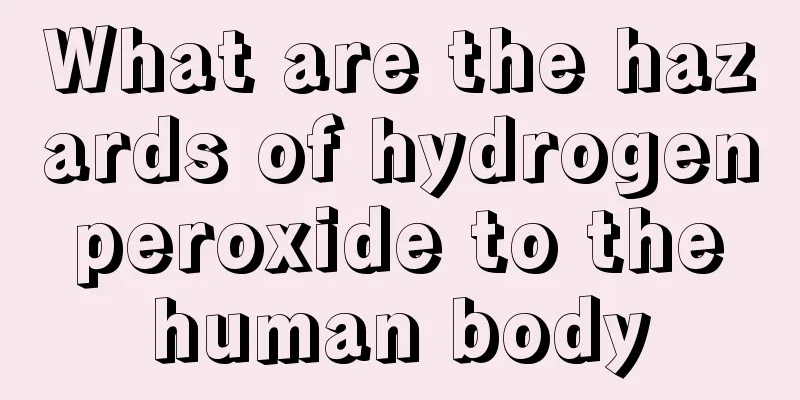Does anemia require infusion?

|
If a person has anemia, there are actually many physical symptoms. For example, frequent feeling of dizziness or lack of strength may be manifestations of anemia. However, some methods of treating anemia in life are very slow to take effect. Some patients with severe anemia even faint. So do anemia patients need infusion treatment at this time? How should anemia patients be given intravenous fluids? Blood transfusion can quickly alleviate anemia or even completely correct it. Although its effect is only temporary, it is still the most important measure in the symptomatic treatment of anemia. Blood transfusion is by no means harmless; severe transfusion reactions can be fatal. Therefore, the indications for blood transfusion must be strictly controlled, and blood transfusion should not be abused without clear indications. Indications for blood transfusion are as follows: 1. Various hemolytic anemias accompanied by symptoms of hypoxia, especially acute attacks, when hemoglobin drops rapidly. Patients with autoimmune hemolytic anemia (AIHA), paroxysmal nocturnal hemoglobinuria (PNH), glucose-6-phosphate dehydrogenase (G6PD) deficiency may experience acute massive hemolysis after exposure to oxidant drugs or chemical poisons or after eating broad beans, as well as patients with various other hemolytic anemias. Hemoglobin quickly drops to very low levels, symptoms of hypoxia are obvious, and life is threatened. Such patients urgently need blood transfusions to alleviate their hypoxia. Hemolysis and jaundice may worsen in AIHA and PNH patients after blood transfusion, but in order to save lives, some risks have to be taken, and the type of blood to be transfused needs to be considered. Most people with G6PD deficiency can recover quickly on their own and do not necessarily need a blood transfusion. However, some patients may have severe anemia and be on the verge of circulatory failure. Often a blood transfusion can help them get through the critical period and recover quickly afterwards. Some hemolytic anemias sometimes suddenly cause aplastic crisis or hemolytic crisis, which generally requires blood transfusion. 2. Various types of hypoplastic anemia accompanied by hypoxia symptoms, such as aplastic anemia, pure red blood cell aplasia, late-stage myelofibrosis, anemia of chronic renal failure, etc. Most of these anemias are not easily treated, and the patients can only rely on blood transfusions to increase hemoglobin levels to maintain their lives. Most of these patients have adapted to the state of low hemoglobin levels, and blood transfusion has an inhibitory effect on bone marrow hematopoietic function. Therefore, if the hemoglobin is above 60-70g/L and there are no symptoms of hypoxia, blood transfusion is not suitable. 3. Patients with leukemia, lymphoma, multiple myeloma, myelodysplastic syndrome (MDS) or refractory anemia often need blood transfusion, preferably component blood transfusion, if the treatment is ineffective during the treatment process or in the late stage of the disease and the anemia is severe. 4. Severe β-thalassemia, intermediate β-thalassemia with more severe anemia, sickle cell anemia, etc., the anemia is often very serious and generally relies on long-term blood transfusions to maintain life. Another important role of blood transfusion for this type of anemia is to inhibit the hematopoietic function of the bone marrow, thereby reducing the production and destruction of abnormal red blood cells. Some people advocate giving children with severe β-thalassemia "high transfusion therapy" starting from infancy, which can prevent many typical symptoms and signs from appearing and prolong the patient's life, but they will still inevitably die from secondary hemochromatosis in the end. Some people also use the method of "new red blood cell" transfusion to prolong the effect of transfusion, reduce the number of transfusions, and thus delay the onset of hemochromatosis. Blood transfusions are also used to inhibit the production of PNH cells in the bone marrow that are prone to hemolysis, thereby reducing hemolysis. 5. In case of acute massive blood loss, the concentration of red blood cells in the blood does not change much before a large amount of fluid enters the bloodstream. The consequences of a decrease in total blood volume, such as a drop in blood pressure and circulatory shock, are much more serious than a decrease in red blood cell volume. When the amount of blood loss at one time is estimated to exceed 15% of the total body blood volume, blood transfusion or fluid infusion should be given first. The amount of blood loss is difficult to estimate accurately, so you should pay more attention to the patient's blood pressure, pulse, and whether he or she has symptoms such as sweating, nausea, and irritability. Before blood transfusion is ready, fluid replacement should be given first. Whole blood transfusion is most appropriate, but packed red blood cells plus crystalloid solution and plasma or albumin solution can also be used. 6. Burn patients lose a large amount of plasma on the skin burn surface within the first few days. At this time, plasma and crystalloid solutions are most needed to restore the total blood volume. Later, when hemolytic anemia gradually worsens, concentrated red blood cells or whole blood can be transfused. 7. Blood transfusion is also required when there is severe bleeding and anemia due to blood coagulation factor deficiency (such as hemophilia) or platelet deficiency. Fresh whole blood is usually used because in addition to replenishing red blood cells, it can also replenish coagulation factors and platelets in plasma. However, if the anemia is not very severe and the main purpose is to stop bleeding, it is better to use fresh plasma or plasma biological products - concentrated coagulation factors, which will be more effective. For example, for hemophilia, factor VIII cold precipitate or highly concentrated form can be used; for bleeding caused by platelet deficiency, blood transfusions containing concentrated platelet components can be used. Megaloblastic anemia caused by iron deficiency anemia, folic acid deficiency or vitamin B12 deficiency generally does not require blood transfusion, even if the anemia is severe. Because after treatment with iron, folic acid or vitamin B12, the subjective symptoms improve quickly and the blood count improves rapidly, there is no need for blood transfusion. |
<<: Why can't blood be drawn on the same side as an infusion
>>: Urine test showed occult blood
Recommend
How to remove heat and toxins from the body
Heat and toxins in the body will trigger a series...
How to clean mildew spots on clothes
The arrival of autumn and winter brings a drop in...
Can pertussis syndrome be treated?
Whooping cough is a common cough symptom and fall...
Is Blood Diamond Wild Oats useful?
I am very considerate to my wife, but I cannot sa...
7 subconscious actions can shorten your life by 20 years
When people are bored, nervous or anxious, they o...
Can lymphoma be cured? How to cure it?
The peak incidence of lymphoma is between 31 and ...
Hair dryer repair
I believe that many women who love beauty should ...
Traditional Chinese medicine prescription for prostate cancer
Chinese medicine prescription for prostate cancer...
What are the pathological examination methods for nasopharyngeal carcinoma
What are the pathological examination methods for...
Can you squeeze acne? Pay attention to these
Acne, also known as acne, is a type of acne that ...
How to improve interpersonal communication skills more effectively?
Friends who work in society all need interpersona...
What to do after eating persimmon peel
Persimmons are rich in nutrients and taste sweet ...
The allergy healed and left red marks on my face
People's skin may have allergic reactions to ...
What should I do if my eyes are swollen due to pupil tattoo surgery?
Modern people care very much about their self-ima...
What to do if your fingers crack in winter?
I believe many friends have tried this and found ...









